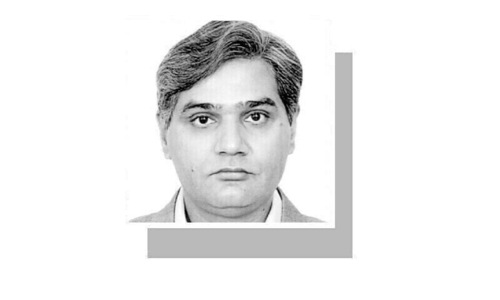
KARACHI: Anyone who has seen the visuals of a certain part of Surjani Town in Karachi which looks as if it’s been hit by a thunderous river that has vengefully found its way into a residential area, must be appalled to realise that despite the hoo-ha being made in the media, the governments (federal or provincial) have shown inability to pre-empt the post-rain situation in the city.
Yousuf Goth, next to Surjani, cuts the same picture, as do some other, if not most, areas of the Sindh capital.
The blame game that we’ve been witnessing for the last few months between the provincial government and other forces of authority doesn’t mean anything because all of them know that if one was to narrow down the city’s multifarious problems to a single issue, it’s population. Karachi has already burst at the seams, and is now terribly misshapen.
As per the 1961 census carried out in the country, Karachi’s population was 2.1 million, with the average growth rate of three per cent. In 1968, it was 2.9m. During this period (1960s), Karachi began to face power outages and rain-induced issues such as streets getting inundated with rainwater. Not that these hiccups didn’t exist before that; they did. But with the intractable vertical movement of the demographic graph, they were becoming harder and harder to manage.
The city has motherly charm and character and the capacity to feed anyone who looks up to it for help
The 2017 census told us that Karachi’s abaadi now stands at a touch more than 16,000,000. If you talk to town planners, they might dispute the figure, arguing it’s much more than that. Let’s stick to the official stats.
Who can stop people from pouring into Karachi? No one — and no one should, because every Pakistani has the fundamental right to live and work wherever they want to live and work in the country. But, then, therein lies the gist of the argument: more people, more consumers of electricity, gas, and water; more vehicles on the roads; and more food to put on the table. This is a simple supply and demand conundrum.
The commercialisation of buildings that took place, which supporters of the provincial government harp on about, is a result of the population explosion that couldn’t be contained both by previous few governments and by those who held the city’s reins when the country still had two wings. Even a glance at the old files or newspapers can reveal how Karachi went from a little quaint town inhabited by 300,000 to 400,000 men and women in 1947 to a megapolis whose current population is more than that of quite a few countries.
By the way, it is all understandable why Karachi has this magnetic appeal for everyone. There are more opportunities here to earn, if not a decent living, enough to survive in a financially cut-throat world. The question that needs to be asked is: do those who claim to own the Sindh capital have the will and power to put a system in place to keep a check on the extraordinary increase in the number of city inhabitants? One is afraid the answer is in the negative.
Karachi has motherly charm and character. It has the capacity to feed anyone who looks up to it for help. Yes, what can be done, which might help in the long run and isn’t easy to do, is that the government/authorities should act strictly to bring those into the tax net who earn taxable (repeat: taxable, not the poor lot) income but evade being lawful. More importantly, the city shouldn’t have multiple power structures. Multiplicity of control centres leads to confusion. Clarity of ideas, of what needs to be done, is the need of the hour.
Published in Dawn, August 26th, 2020















































